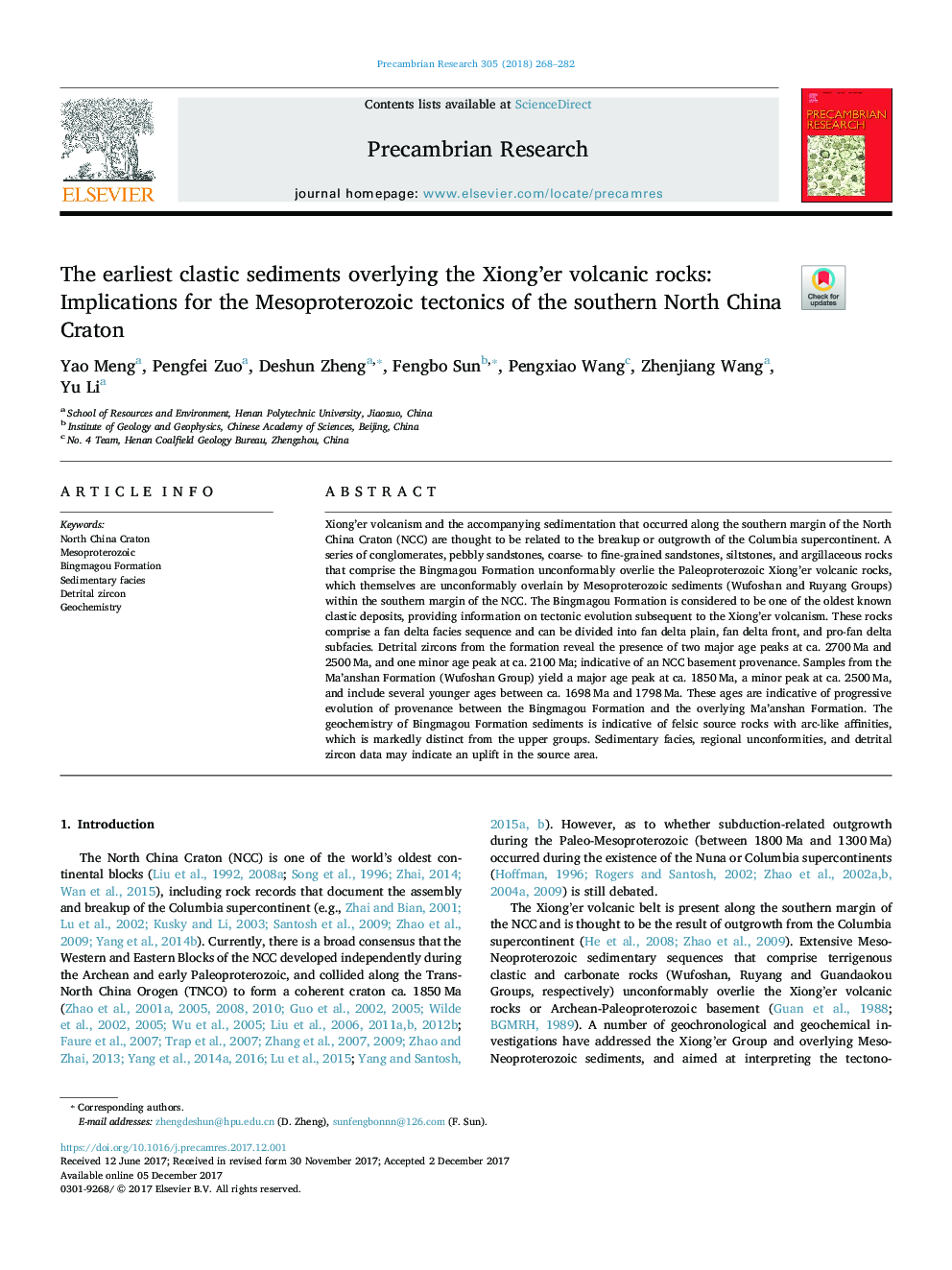| Article ID | Journal | Published Year | Pages | File Type |
|---|---|---|---|---|
| 8912668 | Precambrian Research | 2018 | 15 Pages |
Abstract
Xiong'er volcanism and the accompanying sedimentation that occurred along the southern margin of the North China Craton (NCC) are thought to be related to the breakup or outgrowth of the Columbia supercontinent. A series of conglomerates, pebbly sandstones, coarse- to fine-grained sandstones, siltstones, and argillaceous rocks that comprise the Bingmagou Formation unconformably overlie the Paleoproterozoic Xiong'er volcanic rocks, which themselves are unconformably overlain by Mesoproterozoic sediments (Wufoshan and Ruyang Groups) within the southern margin of the NCC. The Bingmagou Formation is considered to be one of the oldest known clastic deposits, providing information on tectonic evolution subsequent to the Xiong'er volcanism. These rocks comprise a fan delta facies sequence and can be divided into fan delta plain, fan delta front, and pro-fan delta subfacies. Detrital zircons from the formation reveal the presence of two major age peaks at ca. 2700â¯Ma and 2500â¯Ma, and one minor age peak at ca. 2100â¯Ma; indicative of an NCC basement provenance. Samples from the Ma'anshan Formation (Wufoshan Group) yield a major age peak at ca. 1850â¯Ma, a minor peak at ca. 2500â¯Ma, and include several younger ages between ca. 1698â¯Ma and 1798â¯Ma. These ages are indicative of progressive evolution of provenance between the Bingmagou Formation and the overlying Ma'anshan Formation. The geochemistry of Bingmagou Formation sediments is indicative of felsic source rocks with arc-like affinities, which is markedly distinct from the upper groups. Sedimentary facies, regional unconformities, and detrital zircon data may indicate an uplift in the source area.
Related Topics
Physical Sciences and Engineering
Earth and Planetary Sciences
Geochemistry and Petrology
Authors
Yao Meng, Pengfei Zuo, Deshun Zheng, Fengbo Sun, Pengxiao Wang, Zhenjiang Wang, Yu Li,
